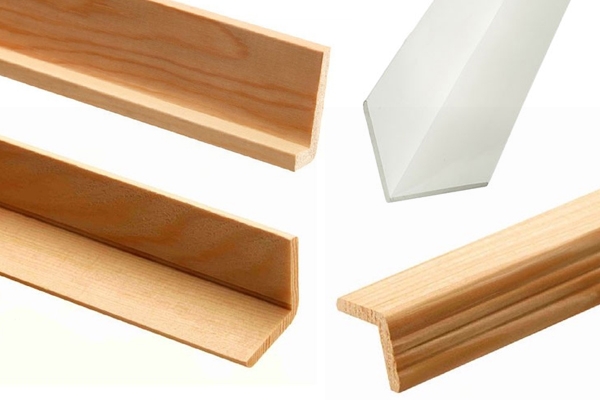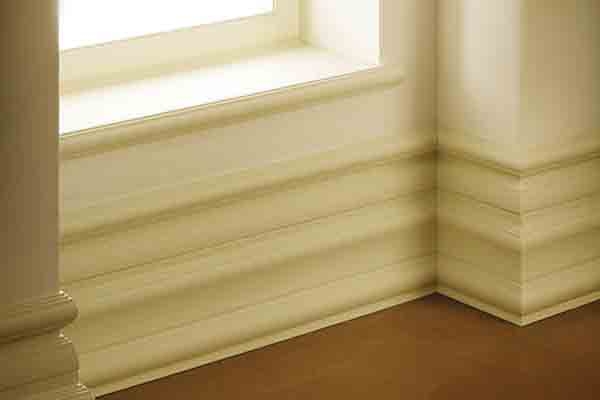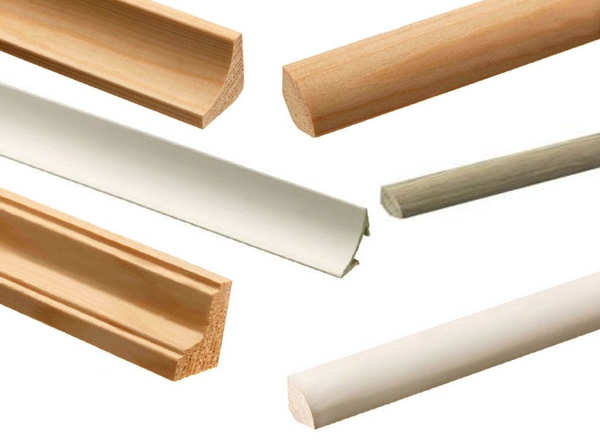Decorative Moulding and Architectural Moulding |
||||||
 |
||||||
 |
such as dado rails, skirting boards or panel mouldings are an excellent way to enhance the look of a room and give it a luxurious feel with minimum effort. Richard Burbidge has a large selection of decorative mouldings and architectural mouldings or trims that can really bring a room to life. This range collection of mouldings ranges from simple but functional styles to highly decorative pieces that will add a professional finishing touch to your room’s décor. |
|||||
|
On a more practical note, mouldings can cover a multitude of sins, including rough edges, natural joints, and any other transitions between surfaces. They can be used individually for specific functions or they can be combined together to create a really ornamental look. The different styles that our decorative moulding is available in, means that you’ll be able to find something to suit traditional styles and modern styles, and we have mouldings available in a variety of materials, including pine, oak, hardwood and plastic. |
 |
|||||
 |
, is that we sell them in packs, sourced directly from the manufacturer, so we can sell them on for trade prices, making them very competitive. Also, because they are produced by Richard Burbidge, they are made to high, exacting standard with the best quality materials. The uses for our mouldings are almost endless and are certainly not restricted to the uses noted in any descriptions. Below is some brief information regarding some of our most popular moulding types and how they are most commonly used. |
|||||
ArchitraveArchitrave moulding is extremely common and is found in most houses, offices, and other buildings, it’s just not something that you would necessarily notice. Architrave is the moulding used to cover where an internal door frame meets the wall. This join between a frame, or lining, and wall is likely to experience movement and shrinkage over time and the architrave ensures that this gap remains covered, keeping the décor looking neat and professional even as it ages. |
 |
|||||
 |
AngleAngle moulding, also known as corner guard, will protect and neaten a rough edge. This moulding is commonly used on the edges of worktops and shelving, as well as on the outside corner of walls. They can cover where two boards meet and will hide any decorative imperfections you may have on a project you are working on. They can also be fitted to the inside corners of walls or similar structures to conceal joints. |
|||||
Glass BeadGlass bead moulding, also known as window bead or glass beading, is typically used to hold glass panels in place on windows and doors. Using different glass beads with varying profiles will add the defining detail to any project. Glass beads are made from various materials and are generally easy to paint, wax, stain or varnish to match any interior design or décor requirements. Lengths of glass beading can easily be cut to size. |
 |
|||||
 |
DadoDado rails, also known as chair rails, are traditionally fitted onto walls roughly halfway up, so they effectively split the wall. The split is often used to separate the decoration on the wall. For example, the bottom part may be wallpapered while the upper area is painted. They are also used in places where protection from furniture may be required. The name chair rail was adopted because they can be used to protect a wall from being knocked by the back of chairs and are often used in high traffic areas such as restaurants and hospitals. It is very similar to a picture rail, which is typically positioned further up a wall than dado, roughly where the top of any handing pictures would be located. |
|||||
SkirtingSkirting boards are another common feature found in most buildings. They run along the bottom of a wall and can cover a multitude of sins. Skirting will hide any gaps where the floor meets the wall and laminate and wooden floors will always need a gap to allow for expansion and contraction. They can be used to hide wiring, so it is not causing a trip hazard and they will also work as a protective trim that prevents furniture being placed too close to a wall. If you want to enhance them decoratively, skirting can be painted in matching or contrasting shades or you can choose more decorative profiles or combine them with other moulding trims to produce something more ornamental. |
 |
|||||
 |
Scotia and QuadrantScotia moulding is concave moulding that is usually used to cover expansion gaps between walls and floors. It is often used when a new floor has been fitted but the skirting boards have not been removed and they will cover any gap between the floor and the skirting. Scotia is also used with wooden or laminate floors that do not have a skirting. Quadrant moulding is a beading that is convex, so the profile is opposite to scotia, but it is usually used for the same purpose as scotia – to cover expansion gaps between floors and walls. Quadrant mouldings are a very common bead moulding. |
|||||
 |
||||||










